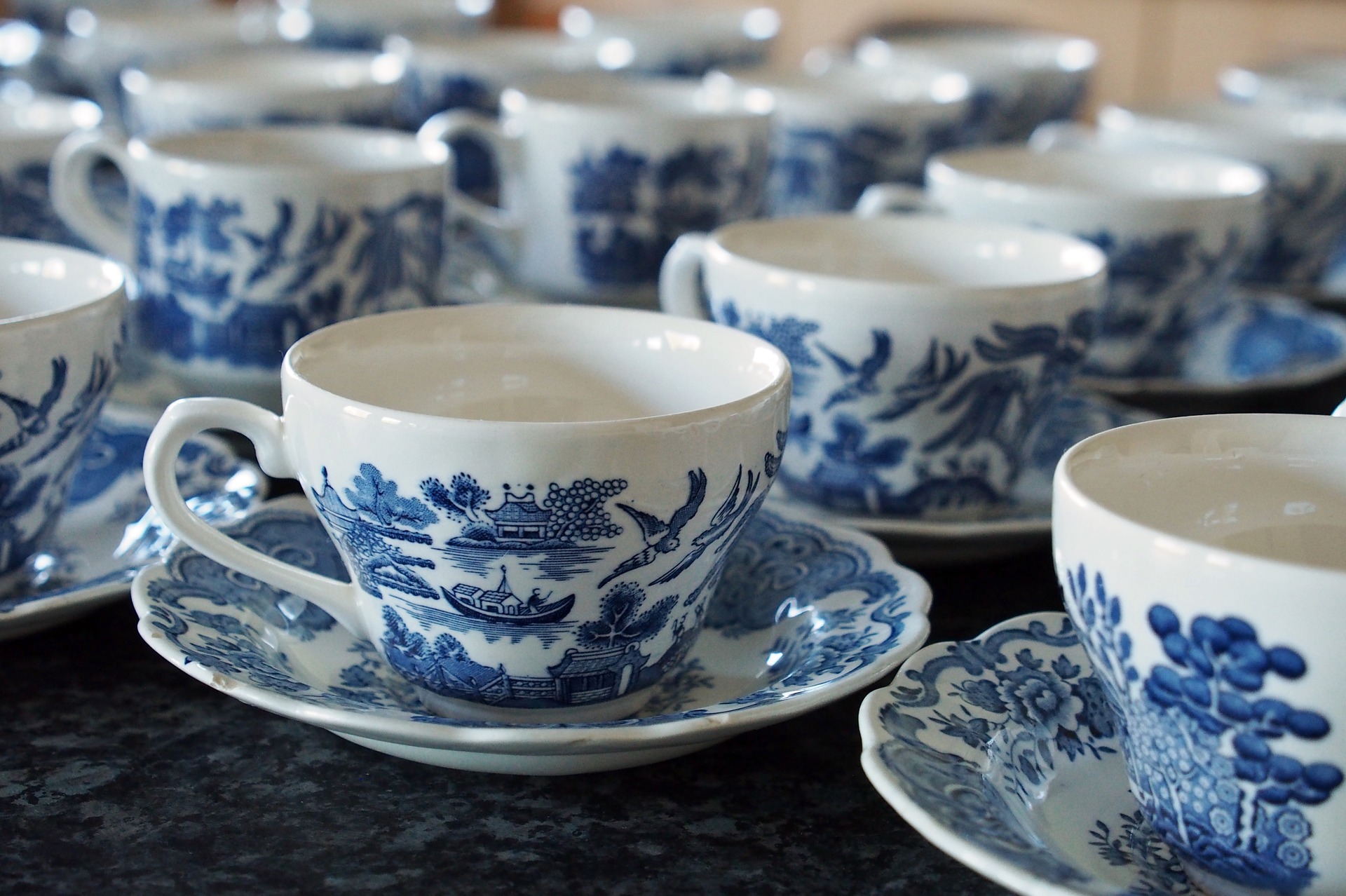
Legend has it that the idea of a saucer being placed under a cup of containing hot liquid developed in the 17th century, when the daughter of a Chinese military official found it difficult to grasp the bowls of boiling tea she was asked to brew for him. The enterprising girl asked a local potter to create a little plate on which to place the hot tea bowl.
Others record that the first saucers were in fact produced in Turkey, not for tea but for coffee. The concept of a matching cup and saucer started to spread abroad along with the rise of Turkish-style coffee houses. In 1710, the German factory Meissen produced teacups with matching saucers, modelled not on a Turkish, but a Japanese design.
The idea was quick to catch on throughout Europe, as aristocrats deemed the little saucer an important element in protecting their expensive furniture, as well providing a means of support for holding the cup. The French described this item as a ‘soucoupe’, and the Germans as an ‘untertasse’, which both perfectly describe its function. However, for the English the term ‘saucer’ was deemed more applicable, as this small plate with a rounded indentation at its centre was essentially the same shape as the item that had hitherto been used for serving spices, seasonings and sauces at the dinner table.
The saucer proved to be a multifunctional miracle. You could use it to pass a cup containing hot tea from one person to another, you could lay a spoon on it beside the cup, and also use the saucer to lift the cup while drinking. A small biscuit or square of cake could be placed beside the cup on the saucer, ready to be dunked into the hot liquid.
To cool the beverage, it was a common practice to pour the hot tea from the cup into the saucer, then sip it from the saucer instead of the cup. Probably thought of as a brilliant idea at the time, nowadays this is considered a definite social no-no.
